

Sea Lions
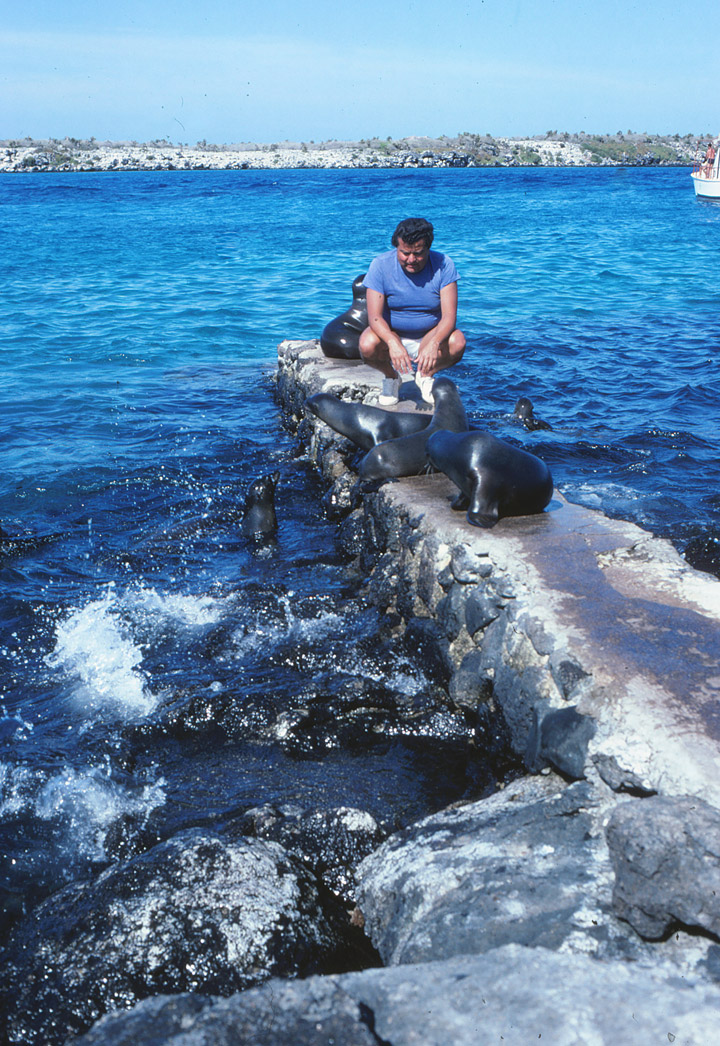
close encounter
Scientific classification Kingdom: Animalia Phylum: Chordata Class: Mammalia Order: Carnivora Suborder: Pinnipedia Family: Otariidae
Genera Eumetopias Zalophus Otaria Neophoca Phocarctos
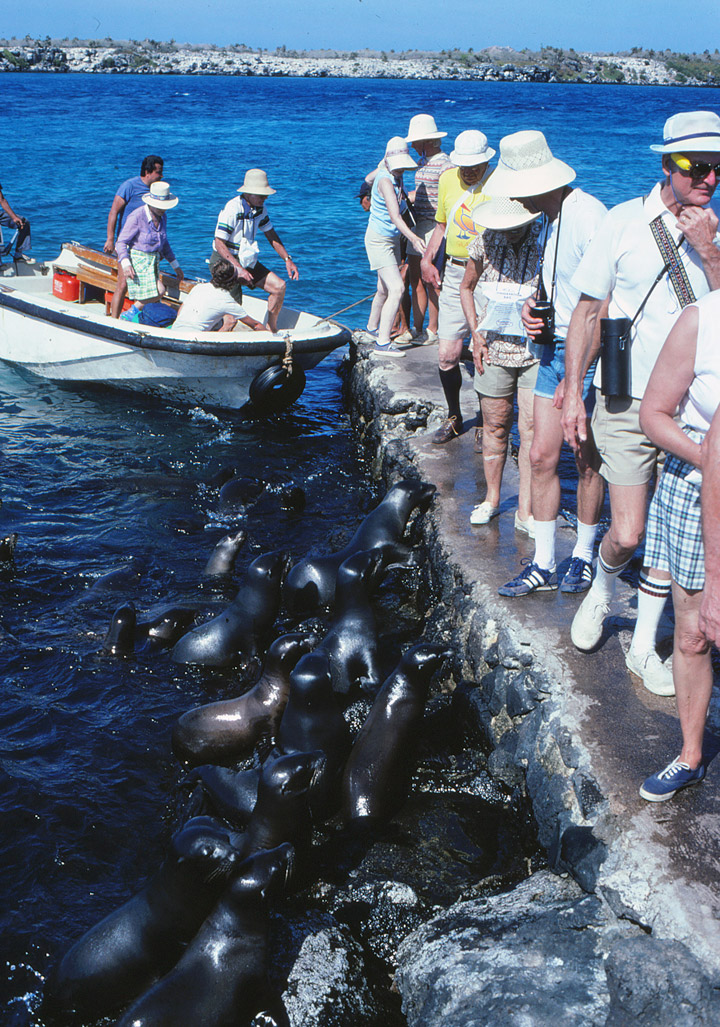
island landing next to the Sea Lions
A sea lion is one of many marine mammals of the family Otariidae. Sea lions are characterized by the presence of external ear pinnae or flaps, long front flippers, and the ability to walk on four flippers on land. They are generally found in shallow waters of coastal areas of both northern and southern hemispheres, with abundant food sources.
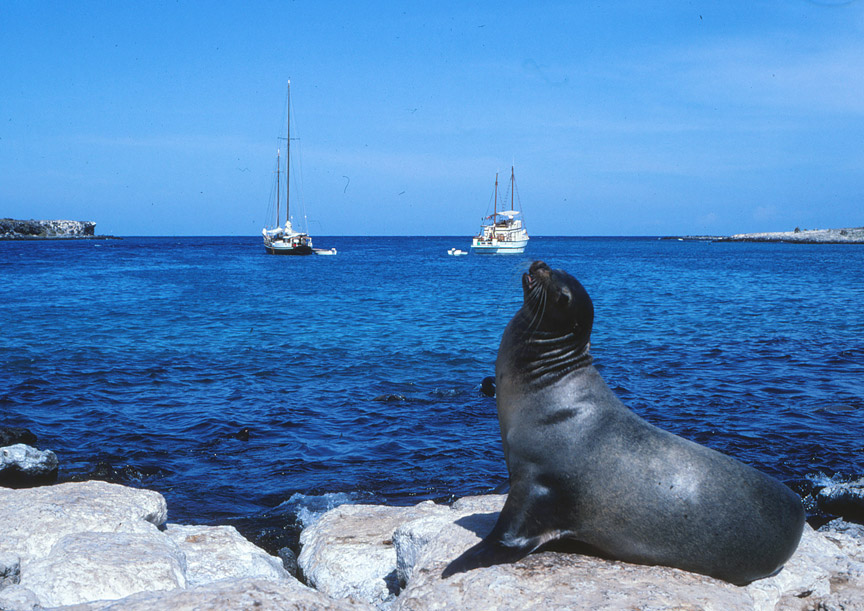
Sea lions of many species have seen a severe and rapid decrease in numbers in
recent years. Many factors including overfishing of prey species, shooting by
fishermen and pollution have probably contributed to the decline. The population
of Steller sea lions in Alaska has declined as much as 80% since the 1970s. In
contrast, California sea lions are abundant and the population continues to
expand at a rate of approximately 5.0% annually, as it has since the mid-1970s.
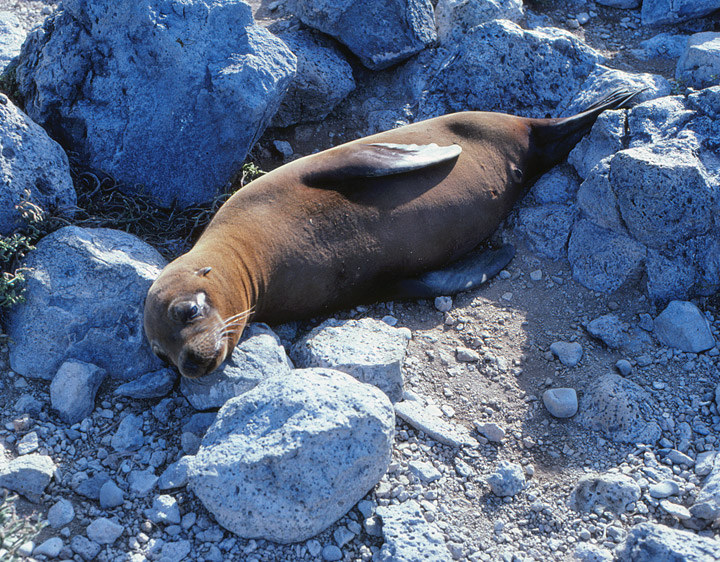
Sea lions are often a popular attraction at zoos and aquariums, performing
behaviors such as throwing and catching balls on their noses and clapping.
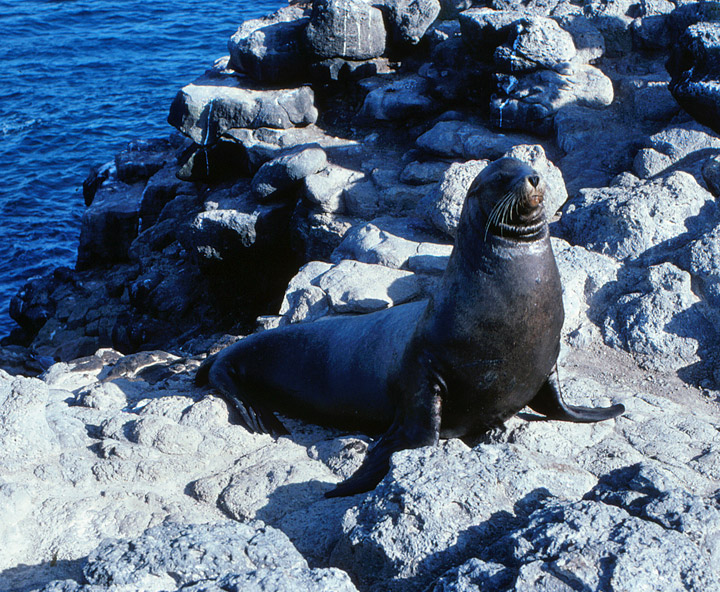
A hybrid sea lion from a cross between the California sea lion (Zalophus
californianus) and the South American sea lion (Otaria byronia) has occurred.
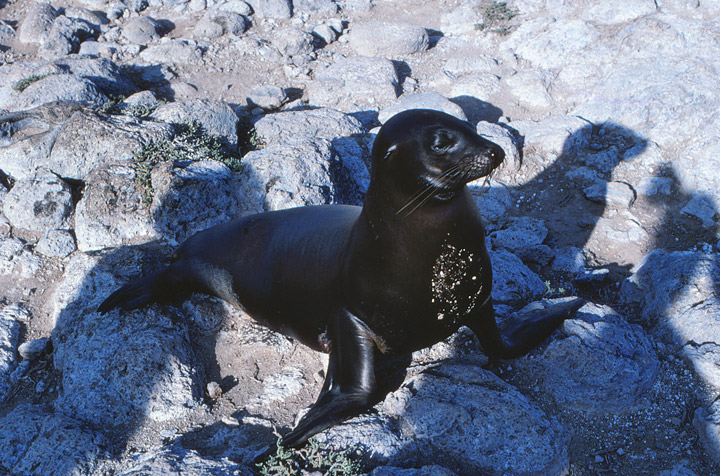
The government of Japan has set a quota of 116 kills per year in Hokkaido, as
sea lions are seen as a threat to commercial fisheries. International
environmentalists and local fishery advocates continue to debate the issue.
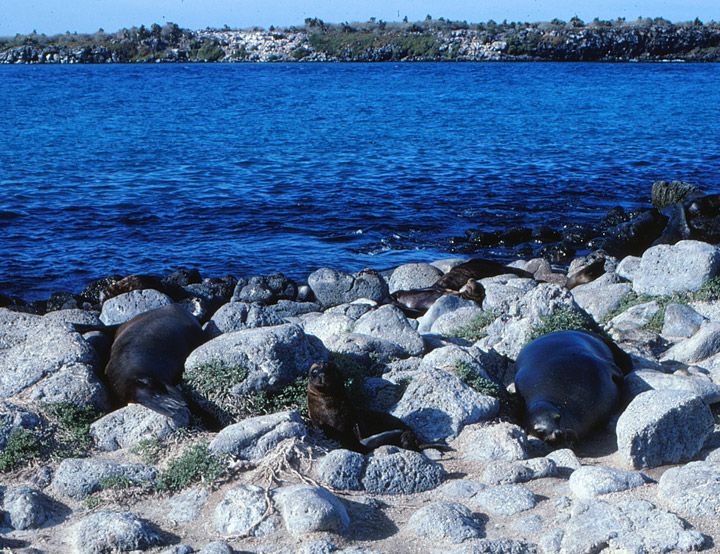
The Norwegian government has set a quota of 200 kills per year.
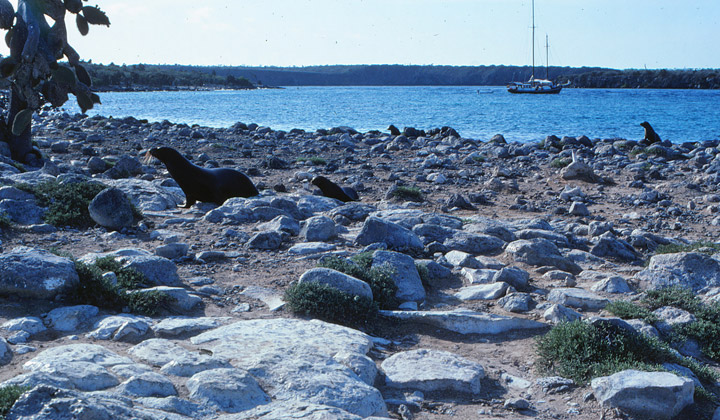
Sea lions have been trained by the U.S. Navy's Marine Mammal Program, based in
San Diego to detain scuba divers.
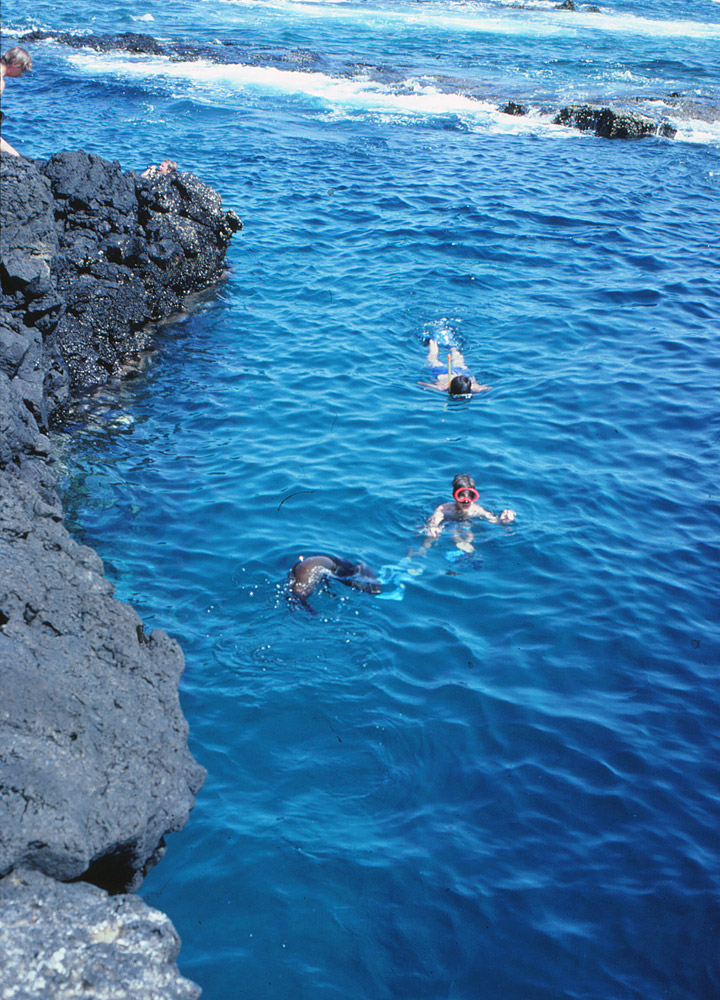
swimming with the Sea Lions
Sea lion attacks on humans are rare, but have occurred in at least a single notable case, in which a 13 year-old Australian girl was attacked while in the water. Sources said that the likeliest explanation was that the animal was attempting to play with the girl.
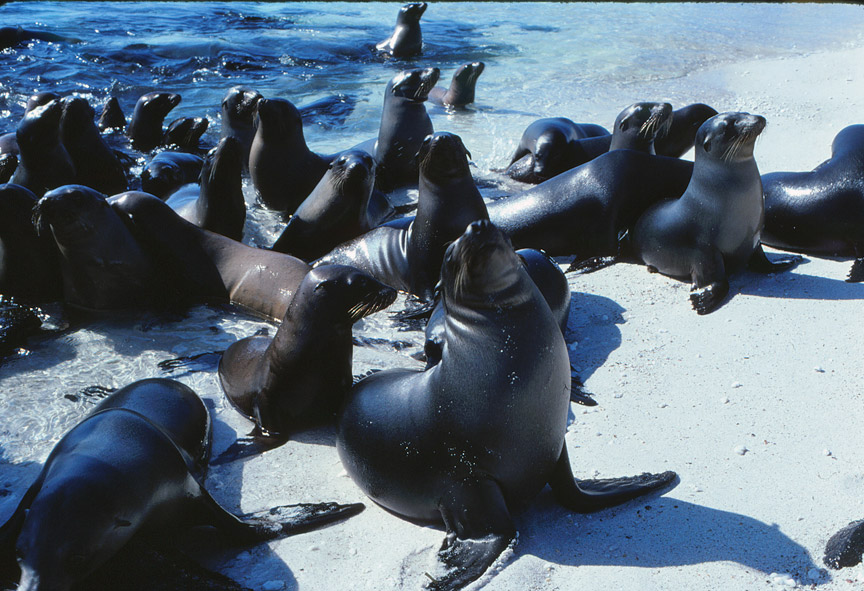
The Moche people of ancient Peru worshipped the sea and its animals. They often
depicted sea lions in their art.
Text from Wikipedia
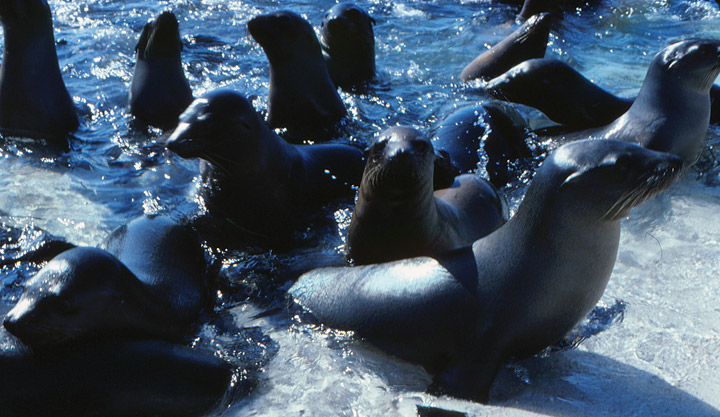
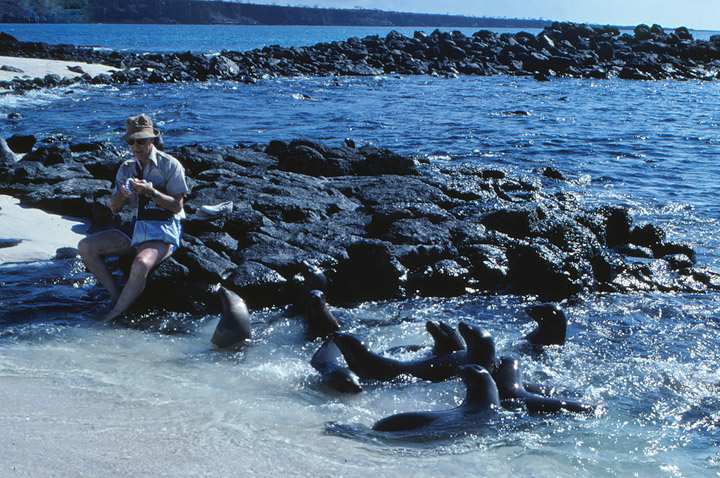
curious Sea Lions
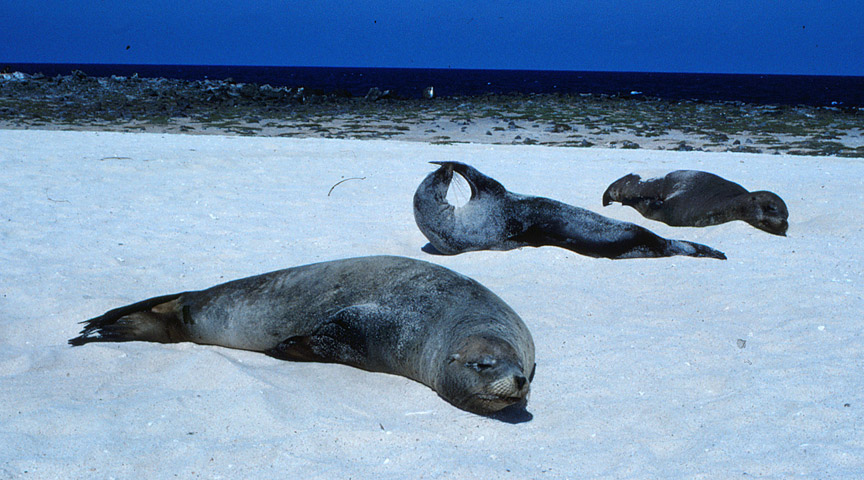
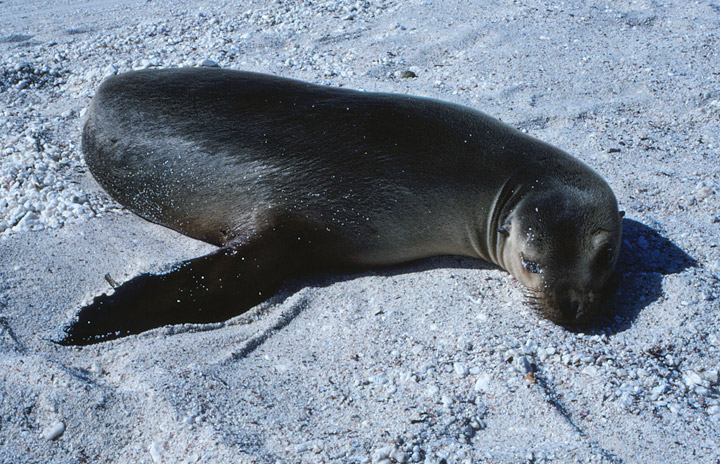
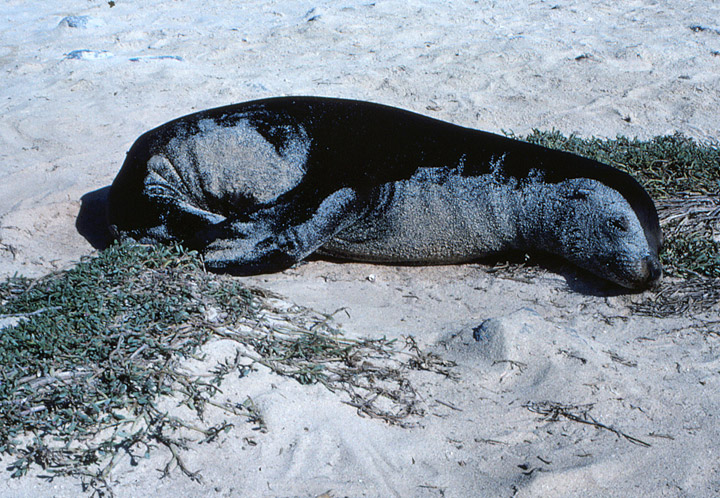
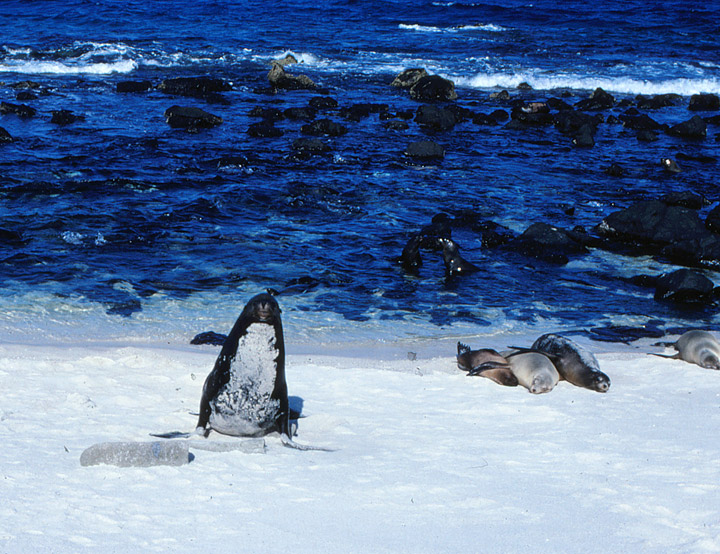
male guarding his harem
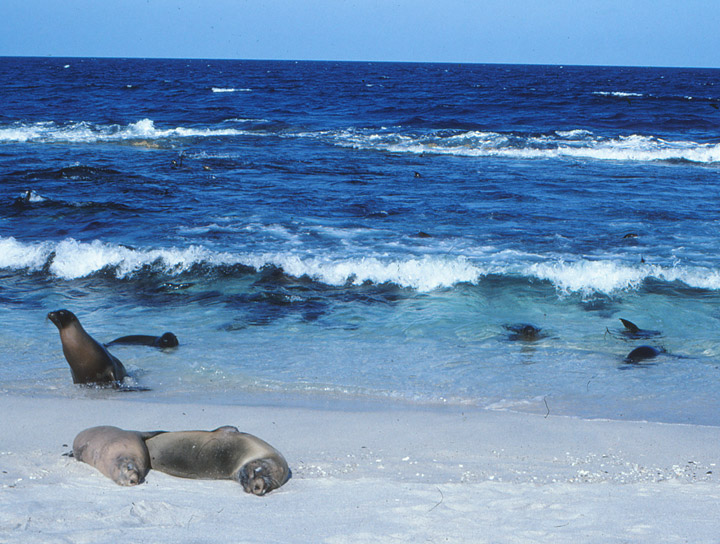
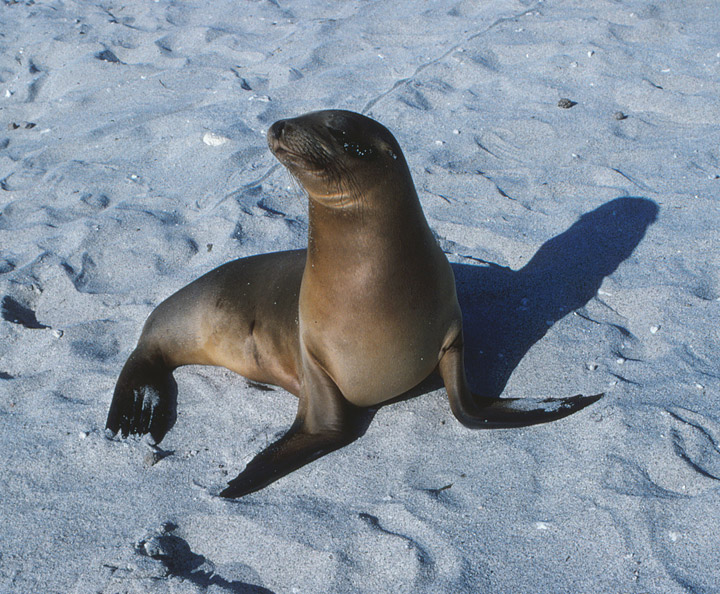
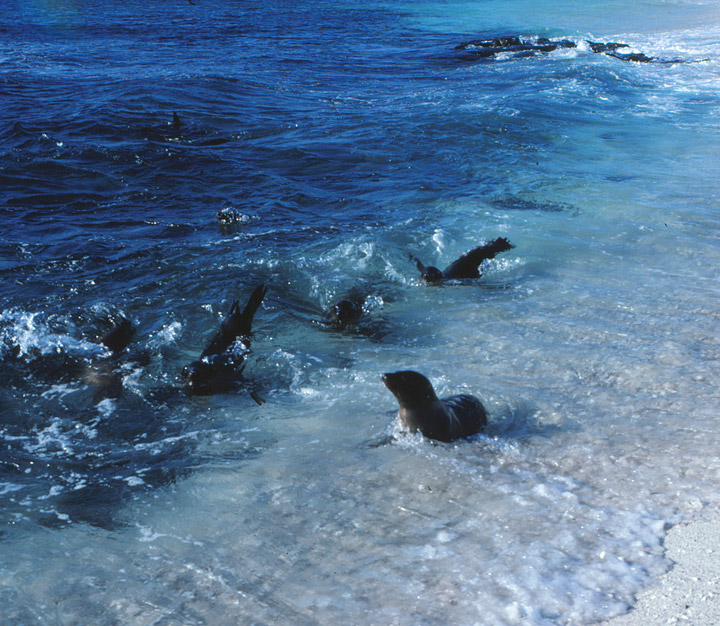


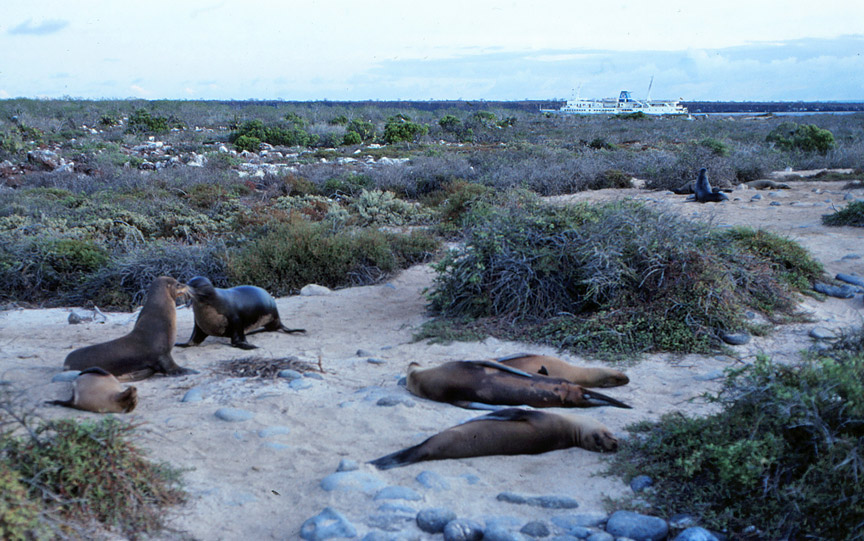
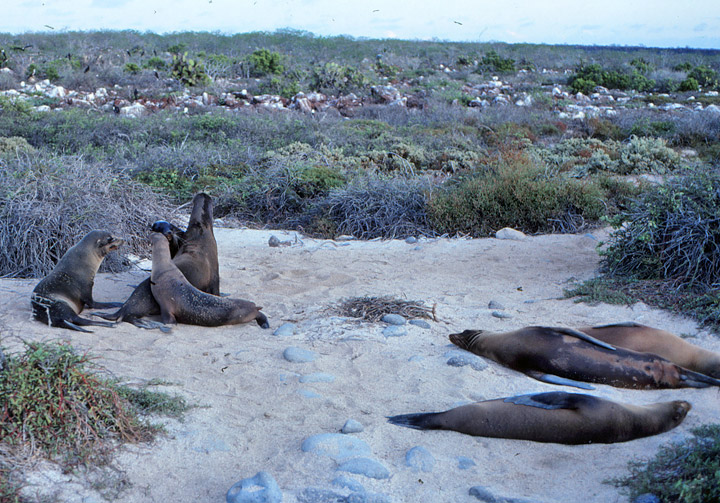
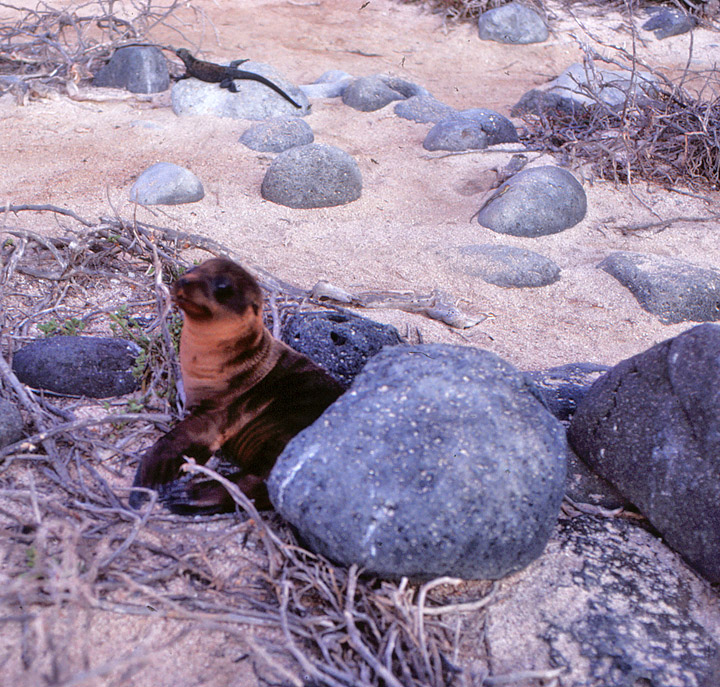
Return to Galapagos Island page